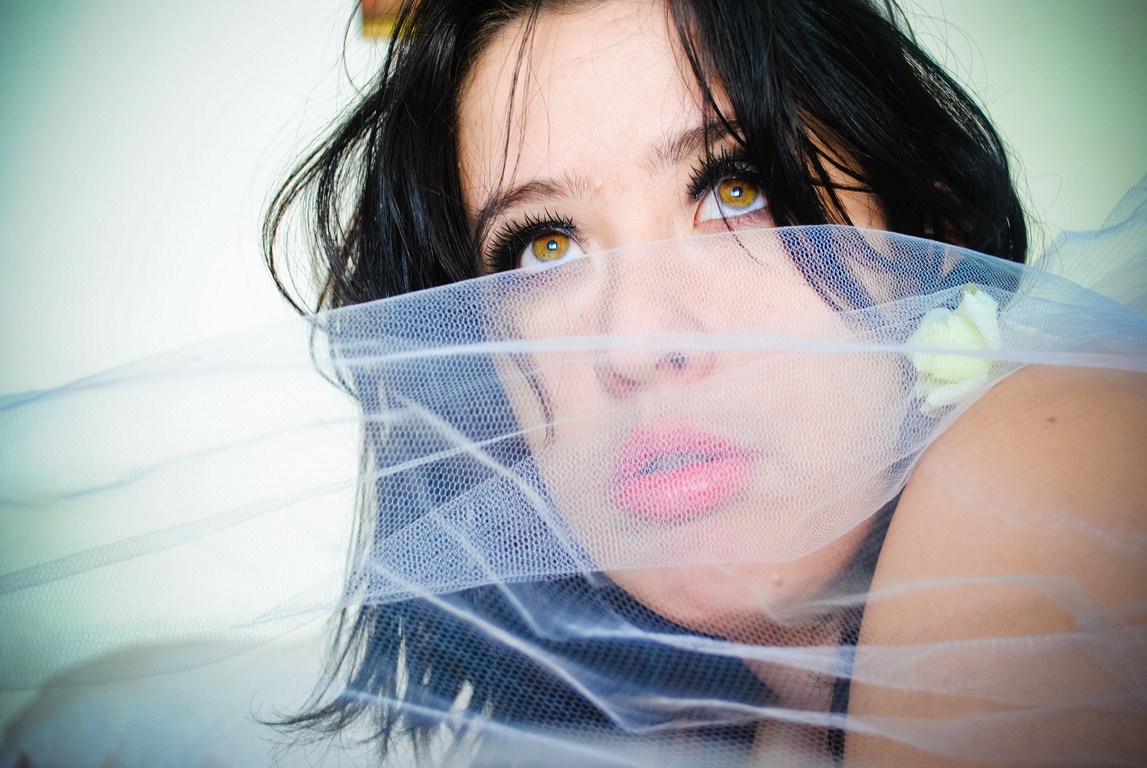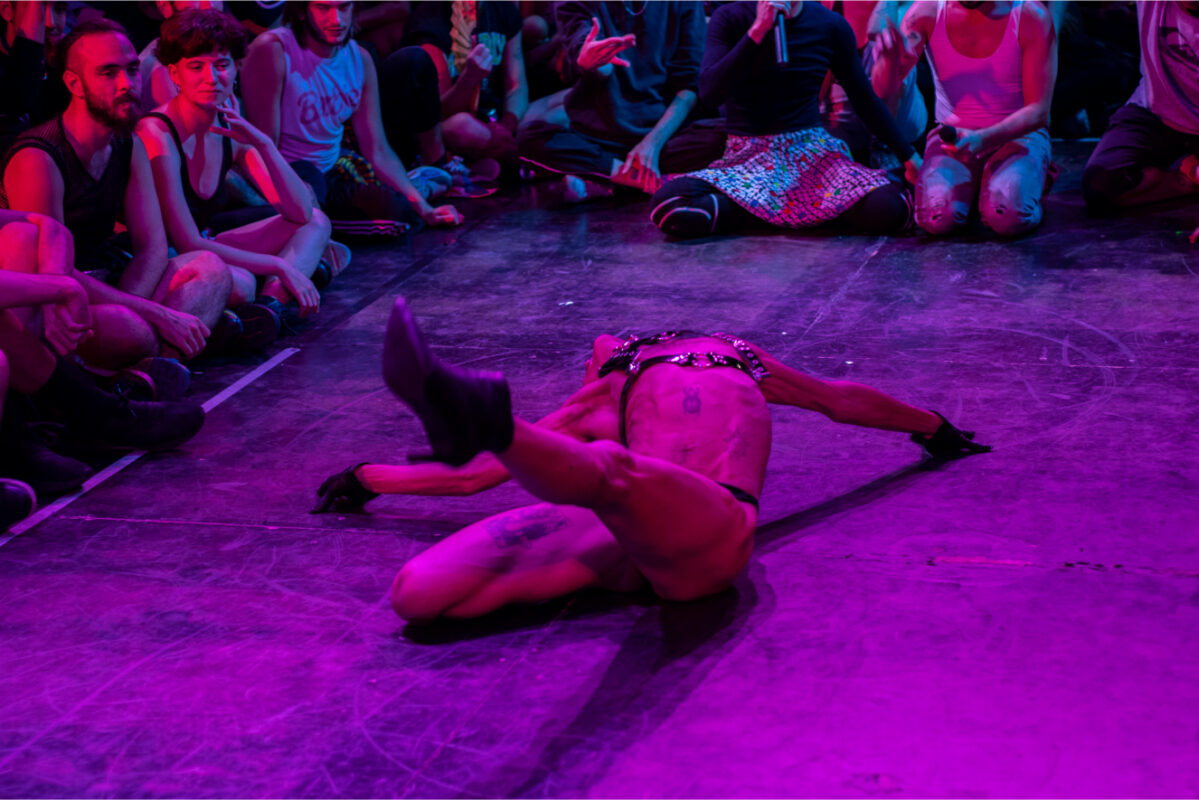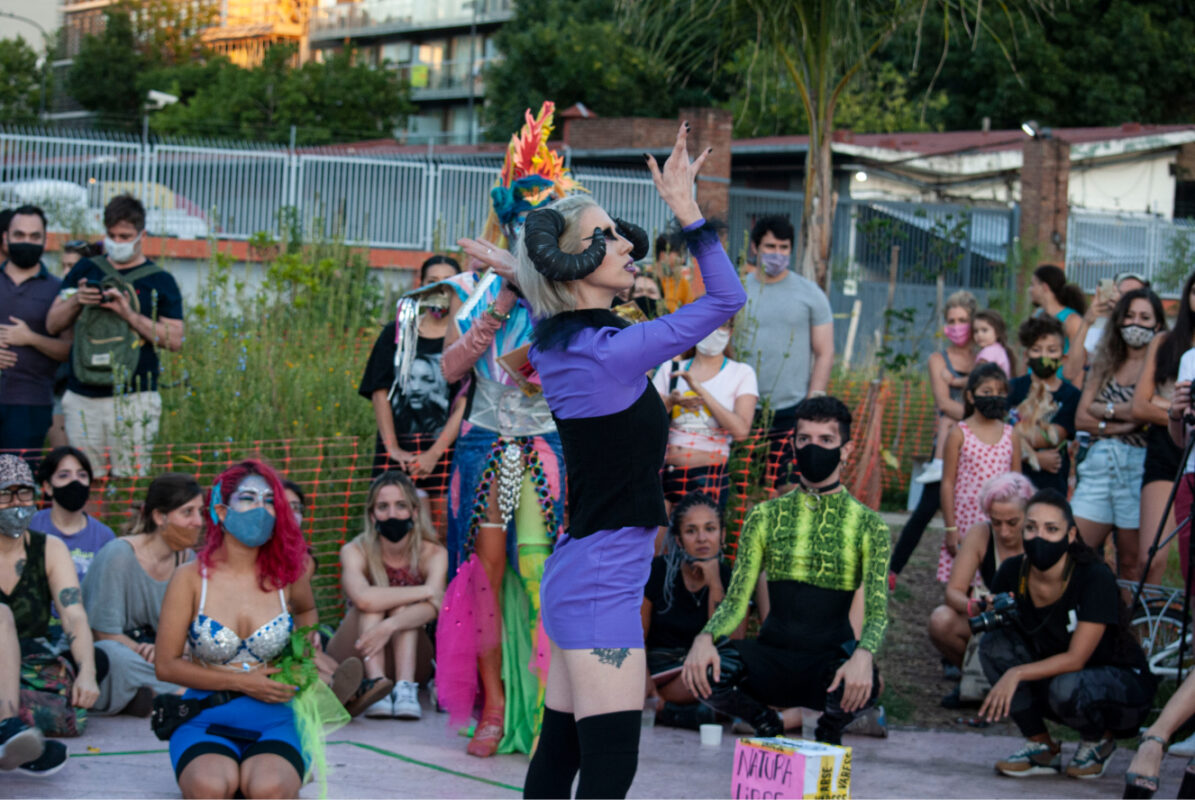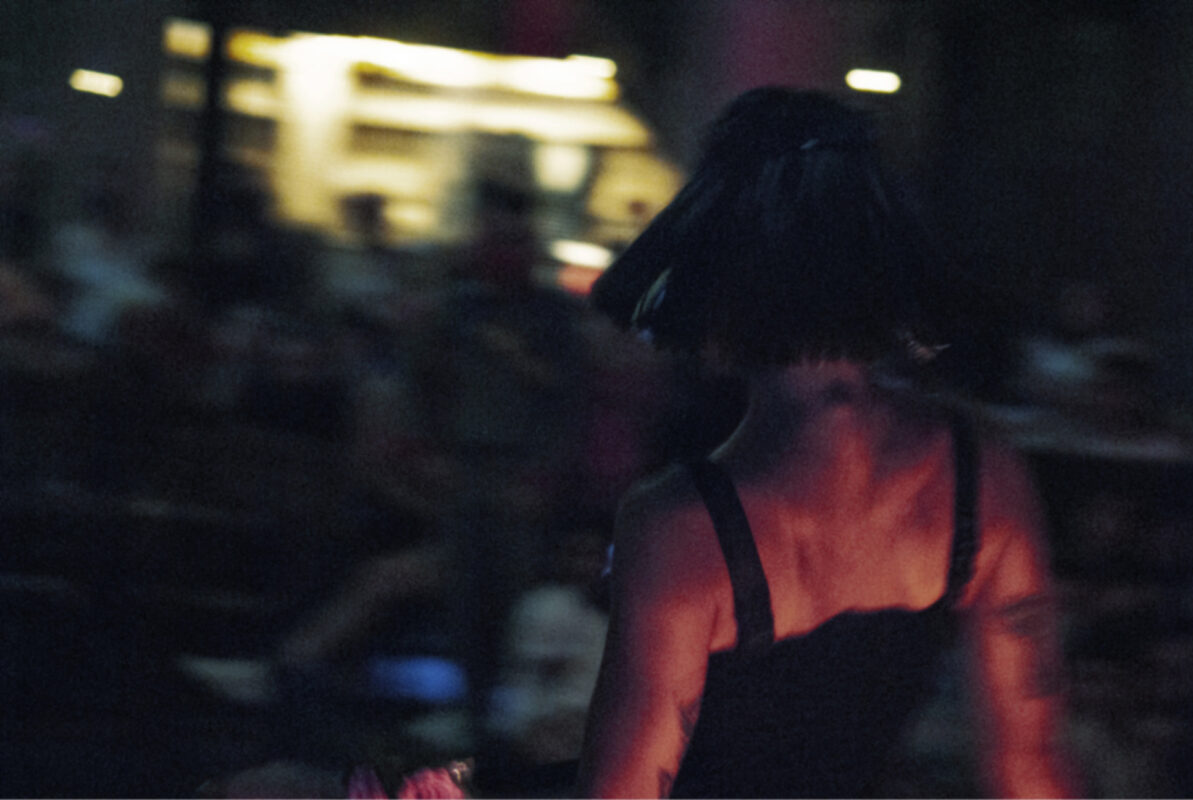
Between dance and writing
I was born in Buenos Aires, at the Pirovano Hospital, just three blocks from where I live now. I’m very much a “porteña,” sometimes a bit too much for my taste. I love and hate this city like most ‘porteños’ do. I’ve traveled and seen the country, but I’ve always lived here.
My relationship with dance began when I was four years old. My mom took me to body expression workshops – it was all very early 80s. I was fascinated by the language of movement, and I loved what they asked me to do: imagine being a tree or the floor was the sea. Since then, I have images that I often bring to the present in my writing, and I incorporate them into critiques, reviews, articles, and even a thesis. The fields of dance and writing emerged simultaneously: at the age of four, I was also given a book of children’s poems by Federico García Lorca. These two things played in favor of shaping my path. Forty years later, I passionately dedicate myself to integrating these worlds. Dance and writing have always been present. I’ve done all kinds of dance: contemporary, improvisation, flying low, ballet, belly dance. Not formally, but always doing, moving. And a few years ago, voguing came into my life, which has my heart.
Like most people, I had a reasonably troublesome adolescence, a child of divorced parents who didn’t get along with new partners – who also didn’t get along. Dance and writing were what I had at hand to escape from complex, challenging, and painful situations. I’ve always had a heightened sensitivity, prone to crying, imagining, and running. And I escaped into dance, imagining myself as a dancer. By the age of six, I was already writing poems, so in elementary school, I was the one who wrote and performed the minuet at school events. In childhood and adolescence, dance and writing had a concrete impact on my well-being; they were my great companions to face the world.. I became a mother at a very young age, and when I became pregnant and had to stop dancing, I missed it a lot. I was happy because I had a child in my womb, but I missed awfully dancing when I had my son. I was thrilled when I returned to it in 1999 with Eugenia Estévez at El Rojas. It was my first improvisation, and it changed my perspective.
I’m generally interested in the language of movement, and it affects me on a very organic level; it connects directly with my vibrations, touching, awakening, and shaking me. As a critic, I studied at the National University of the Arts. At first, I resisted specializing in dance because I also liked cinema and was involved with biodanza. What the University of Buenos Aires (UNA) offers through its programs and curriculum is to create a bridge to theater, dance, cinema, music, and various artistic languages. While studying, I never stopped going to see dance performances and was present at festivals, official productions, and offbeat events. It is interesting to enter the code of each scenic proposal. There’s something I’m always trying to capture. Now, I’ve refined it and can put it into words. I aim to translate that into writing what moves my body.

The language of urban dances
Over time, I discovered different styles and can go from vogue to Argentine folklore. In 2017, I started learning folklore, dancing zamba, chacarera, gato. I became fascinated and attended shows and classes.
There are many visual and audiovisual critics, but only a few in dance. And the existing ones are more focused on contemporary dance – which is quite broad. Some dances need names. There are many fields within dance, and that piques my curiosity. That had its breakthrough in 2019 when I decided to work with two colleagues on vogue. When I mention it, it’s a dance that I have to explain where it comes from, its characteristics, history, and its antecedents. I’m interested in this language outside the traditional or academic realm, languages that are not socially accepted.
At UNA, a seminar, “Criticism and Specialized Aesthetics in Dance,” studied traditional movements: jazz, ballet, modern, Graham, the prominent figures. It’s interesting to revisit these figures repeatedly, but when I took another seminar with Silvina Szperling, I discovered many places where critics still needed to venture. Through biodanza, I found other areas, including vogue, hip-hop, and urban dances. I was working on my thesis and wondered if I preferred to delve into the language of urban dances to see their common traits. I enjoyed uncovering its history and ended up writing my thesis in voguing.. There’s a whole history, culture, and subculture behind it.
Anyone familiar with dance knows what ballet or jazz is; some things are already part of the discourse within a community. If you mention vogue, there’s a big gap where exploration is needed. I’m interested in participating in my profession, writing, and dancing because I had to dance vogue – not with much success because it’s very challenging – but with much pleasure.

Voguear in front of the Congress
In vogue fem , five elements have to do with the catwalk, the duckwalk, the spind, and the dip, which are particular forms you must respond to. Within voguing, there are also sub-styles, or ‘subgenres’ in more semiotic terms: vogue fem, old way, and new way. Within these subgenres is a lot of history, but criticism generally does not focus on analyzing this language.
The world is hungry for new stories. We often think everything has been said and told but realize it hasn’t. Voguing is directly related to the need for a community that was invisible for decades. A community that had to present itself in a certain way to gain recognition and could say, ‘Here I am,’ through a Vogue cover, one of the most well-known magazines in the fashion world. Seeing how these 21st-century challenges can arise from dance is super interesting. And it makes me proud because I feel part of the dance community.
Some prefer to avoid showing themselves. I understand that, too, because those people have been heavily marginalized and invisibilized. Moreover, there’s something to do with ‘it’s not your show; it’s our dissent.’ Dissidence and feminism, related to the third wave, are coming together and speak out loudly: ‘Here we are.’ It’s super interesting that this is related to dance.

Explorations come from questions. Any research, thesis, or work that involves delving into a subject starts with a question. When I was a child, I used to look in the mirror and couldn’t understand how I was and how I thought about myself. From there, I began to relate to the world through questioning. Now, specifically around dance: what is dance, what does it represent, what are the struggles? There are struggles that we are far from conquering. It’s a pity that, at this point, we have yet to achieve many things within the dance sector. But this encourages us to keep going. Those of us with a fighting spirit can take this in our favor and take to the streets. Put our bodies in public practices, in parks, in squares, hand in hand with feminisms, with dissent, with voguear in front of Congress.
Voguear in front of Congress is not insignificant. It’s something that is replicated in Chile and Colombia. And beyond those who might say, “Why?” or ‘What’s the real gesture in voguing in front of a carabinero or police officer?’ it’s a significant gesture. Because you are saying a lot of things, and you are telling them through movement. And it’s not just through a duckwalk or a catwalk; you are saying it with a whole history behind it, making that gesture much more significant than it seems. That’s the place I like to inhabit, and it’s the place where we need more voices. Welcome the fight to secure more rights so that those rights are for everyone..
A Political Dance

The field of dance in Argentina is very much alive. In this sense, the pandemic played in our favor because people started connecting more than ever with their bodies and asking questions about dance. I saw it in various discussions and conversations with colleagues; the question of what dancing is and how we make dance today is alive. Also, what rights do we still need to obtain and should be pursuing? The entire world took this pause, and in Argentina, it allowed us to ask questions we hadn’t asked before, or that were more “pour la gallery”, more within our microcosm. The dance community has opened up; now, more people are talking about dance and listening to discussions about dance, and there is greater engagement. People are paying more attention and asking questions; they want to know. Some people approached and said, “How does this work?” “What do you mean they do things for free?” It’s a moment to seize and to say no! We should not accept the cliché “for the love of art.”

Like most Latin American countries, Argentina has a history of socio-economic and political crises and knows how to rebuild or at least establish parameters for the struggle. Latin American countries have an enormous capacity for resurgence, activism, and positioning. And even though we may have delayed asking ourselves specific questions, those questions are emerging now. That is unique in Argentine dance: this strength, this determination to keep going.
Dance is my life. It’s so much my life that I have a daughter wholly immersed in dance. It’s my strength, metaphor, and driving force in writing, working, and seeing the world. I spend my time writing and reading, especially now that I can’t go out dancing. I find it challenging to connect with virtuality regarding movement; I need time to pass and return to dancing on the floor, not alone in my house. I will be there in one way or another where there is dance. Dance or dances? Dances because ‘dance’ encompasses many styles that must be acknowledged and considered.
Now, more than ever, we need a political dance, one with something to say, one that is more about content than form—beautiful and aesthetic forms that respond to a particular line. Form—how it looks or how you move—initially seems old-fashioned. I prefer content: seeing what that movement says, what it tells me in political terms. Today, dance has an incredible transformative power, and I want us to move in that direction. There are many of us, but I want there to be more to change the universal narrative a bit..